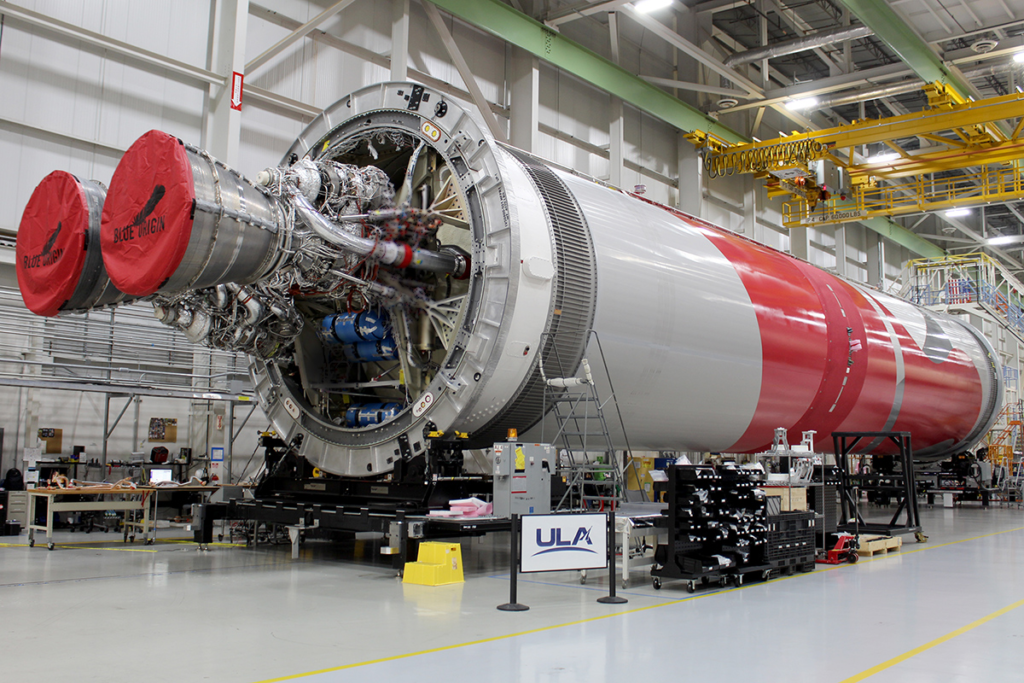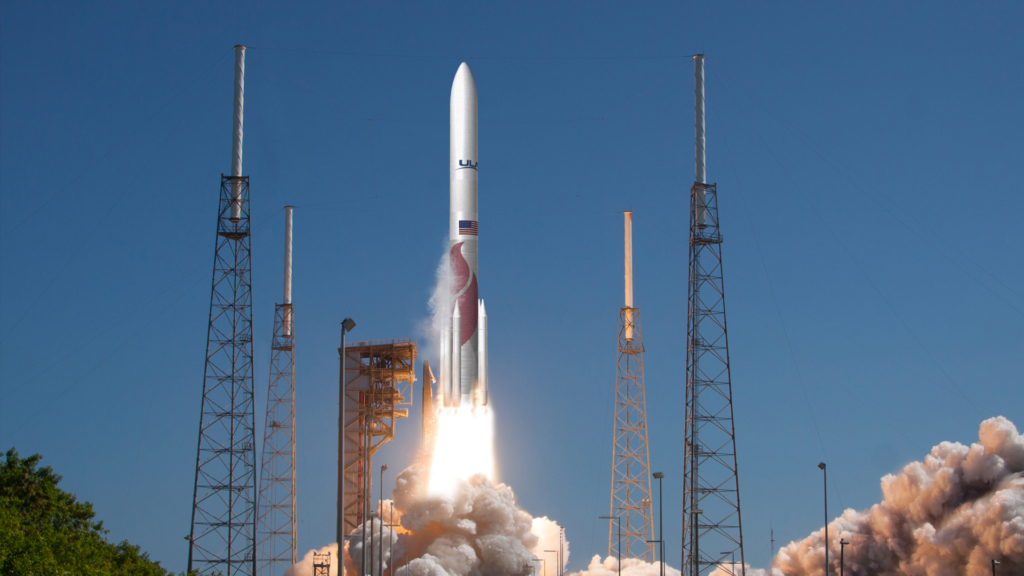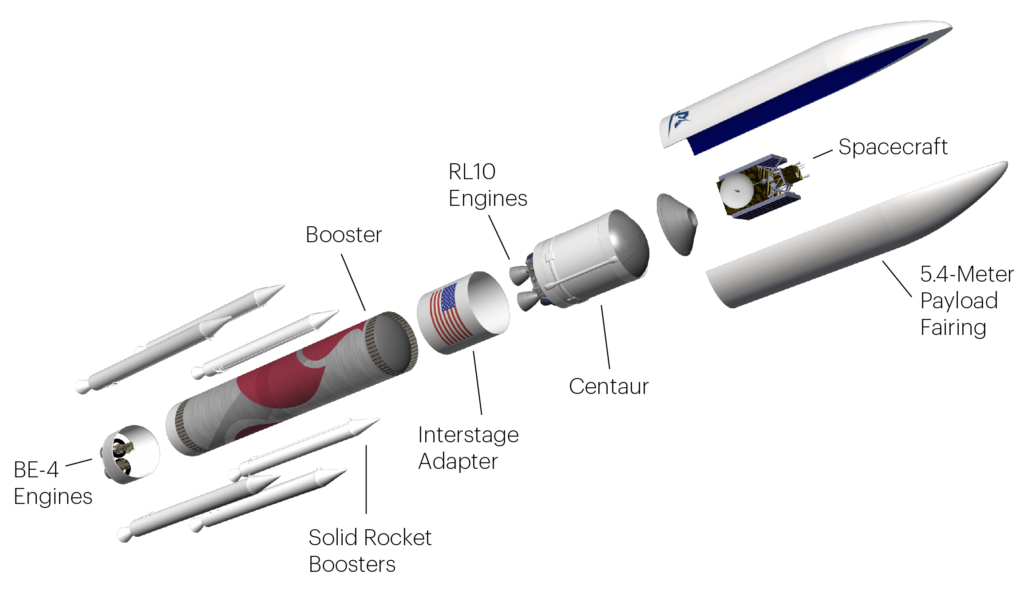
The Vulcan Centaur Is Only Months Away From Its First Launch
United Launch Alliance has been very busy over the past couple of months in preparation for the first launch of the company’s next generation launch vehicle. The Vulcan Centaur is a heavy lift rocket meant to become ULA’s new workhorse within the industry. It features a lot of new technology including two BE-4 engines on the first stage.
As of right now, ULA has not only finished installing both the Blue Origin engines but is about to transport the rocket to its launch complex at the Cape. Once it arrives, Vulcan will go through a few different tests, if everything goes according to plan and the results are promising, its first launch will happen in just a few months in the first quarter of 2023.
This maiden flight is a very big deal for a few different reasons. For one, a lot of important future missions are already scheduled to use Vulcan including Dream Chaser. In addition, this launch will be the first ever flight test of Blue Origin’s BE-4 engines, a rocket engine that has been a long time in the making. Here I will go more in-depth into ULA’s recent progress, when exactly we should expect this launch, other important updates, and more.
Vulcan’s First Launch

As ULA gets closer to Vulcan’s maiden flight, we have seen more and more updates from the company on the rocket’s progress. Earlier this month on November 11th ULA CEO Tory Bruno tweeted saying, “Now that is one handsome roman god namesaked rocket” This included an image of the Vulcan first stage with both recently delivered BE-4 engines installed. He also clarified when asked about the bottom of this rocket that a heat shield still needed to be installed similar to Atlas. Next on November 18th Tory tweeted again this time mentioning, “Thought you guys might like this, from a few weeks ago. The Centaur V Structural Test Article being placed in the stand for testing at @NASA_Marshall to continue collecting data of the upper stage for #VulcanRocket” This included a short video of the upper stage being moved and positioned for testing.
Finally, later that same day, he tweeted again pointing out, “Here’s something to help with your stressful day: #VulcanRocket’s First Flight Centaur V (and Standard Brian). With its pair of astoundingly high performance RL10C engines installed!” Here you could see Centaur V and some of the final work being made on the stage. When asked about whether or not the RL10C engines were flight ready, he responded, “Flight ready. This config is fixed nozzle. More space in the interstage than delta”.
In other news, Vulcan is getting very close to being transported to the launch site for final testing. Last month in October ULA said in a quote, “The first Vulcan launch vehicle is nearing completion in ULA’s factory in Decatur, Alabama, and is awaiting installation of its BE-4 engines. We expect to ship the completed vehicle to the launch site in November. With the engines successfully installed, any day now we should expect an update from the company regarding the rocket’s move to the launch site. Once at the Cape, Vulcan will undergo a final series of tests to verify its readiness for flight, consisting of multiple tanking tests and a wet dress rehearsal, culminating in flight readiness firing in December, which will be the final step prior to launch. Following the successful final testing, Astrobotic and the other payloads will be installed on the launch vehicle.
“This has been an incredible journey to get to this point and I am so proud of the development team,” said Tory Bruno. “We look forward to the first flight as Vulcan offers all customers higher performance and greater affordability while continuing to deliver our unmatched reliability.” Assuming all the testing goes well next month in December, Vulcan will be right on track for a launch in early 2023 as the company currently predicts.
BE-4 & Vulcan

Now that we know more about Vulcan and ULA’s progress toward the first launch, we can take a closer look at the significance of this mission for Blue Origin and the BE-4, and the Vulcan rocket itself. Blue Origin began work on the BE-4 in 2011 and not long after partnered up with ULA to provide engines for the company’s next generation launch vehicle. For years they worked to develop and test BE-4 to try and create a capable engine of the future. In the last few months, we watched constant testing and final manufacturing of BE-4 Flight engines 1 and 2 which are now installed on Vulcan.
In this case, at the end of October just last month, Blue Origin completed its delivery of the first BE-4 shipset for United Launch Alliance (ULA), shipping the engines to ULA’s factory in Decatur, AL after final acceptance testing. Each BE-4 engine provides 550,000 pounds of thrust and has completed an extensive development program. These engines are hoping to end reliance on Russian engines and power a new generation of U.S. launch vehicles. At the time, Bob Smith, CEO of Blue Origin commented, “We’re excited to see ULA’s Vulcan fly. The BE-4 is a great engine, and we’re proud of Team Blue for achieving this milestone as part of ULA’s team. It’s been a wonderful partnership, and this shipset is the first of many more to come.” Tory Bruno also said, “We are very pleased to receive the first two engines for Vulcan’s inaugural flight. Development of this new engine is complete, and the performance of the engine is outstanding. It has been a great team effort working together with our partners at Blue Origin and we can’t wait to see Vulcan fly.” As partially mentioned prior, this launch will be the first ever flight test of these engines. Depending on how the mission goes, it could have a major impact on not only Vulcan’s future, but also other launch vehicles such as New Glenn.
Focusing on the rest of the rocket, leveraging the proven processes, technology, and expertise of Atlas and Delta, the Vulcan Centaur introduces new technologies and innovative features to create the highest value launch service with optimal performance to meet the full range of mission requirements. Vulcan Centaur consists of a single booster stage powered by a pair of BE-4 engines, the high-energy Centaur upper stage powered by two RL10 engines, and a 5.4-meter-diameter payload fairing. Logging an impressive record of nearly 400 successful flights and nearly 700 firings in space, RL10 engines, manufactured by Aerojet Rocketdyne, harness the power of high-energy liquid hydrogen. The RL10 boasts a precision control system and restart capability to accurately place payloads into orbit.
For additional power at liftoff, up to six solid rocket boosters can be added to the Vulcan Centaur rocket. Specifically, Vulcan integrates up to six Northrop Grumman Graphite Epoxy Motor (GEM) 63XL Solid Rocket Boosters (SRBs). They are constructed out of a graphite-epoxy composite with the throttle profile designed into the propellant grain. GEM solids supported the Delta II and Delta IV rockets, and the GEM 63 variant has already flown on ULA’s Atlas V rocket. At the top of the rocket, the payload fairing (PLF) provides a controlled, safe environment for spacecraft during ascent. All ULA PLFs are configured for off-pad payload encapsulation to enhance payload safety and security and minimize on-pad time.
The spacecraft is encapsulated in a 5.4-m- (17.7-ft-) diameter payload fairing (PLF), a sandwich composite structure made with a vented aluminum-honeycomb core and graphite-epoxy face sheets. The bisector (two-piece shell) PLF encapsulates the spacecraft. The payload attach fitting (PAF) is a similar sandwich composite structure creating the mating interface from the spacecraft to the second stage and payload fairing. The PLF separates using a debris-free horizontal and vertical separation system with spring packs and frangible joint assembly. The payload fairing is available in the 15.5-m (51-ft) standard and 21.3-m (70-ft) long configurations. In addition, the company points out that access to orbit remains a critical hurdle for many missions. However, ULA is working to provide flexible and cost-effective multi-manifest solutions to overcome this barrier. With multi-manifest, two or more spacecraft are integrated on a launch vehicle using available performance and volume margin that would otherwise go unused — optimizing mass to orbit and enabling missions. Multi-Manifest on a Vulcan rocket provides a highly reliable and schedule certain launch solution for spacecraft ranging from CubeSats to small sats and beyond. They believe by making launch more affordable, Vulcan Centaur opens up new opportunities for space capabilities, offering unprecedented flexibility in a single system. From low-Earth orbit to Pluto, the single-core Vulcan Centaur does it all.
Not to mention, ULA has been heavily investing in modifying its factory in Decatur, Alabama, and modernizing its infrastructure at the launch facilities in Cape Canaveral, Florida, to support Vulcan rockets. Space Launch Complex-41 (SLC-41) will be the first dual-use pad launching both Atlas V and Vulcan rocket families.
Conclusion
United Launch Alliance has been very busy in the last couple of months. Right now both BE-4 engines are installed on Vulcan and the rocket is only days away from being transported to the launch site. It will then go through some final testing and attempt the first launch if all the initial results look promising. We will have to wait and see how it progress and the impact it has on the space industry.
